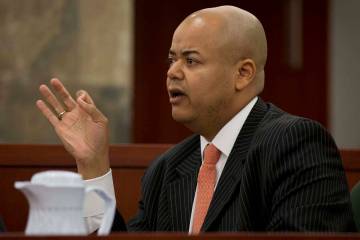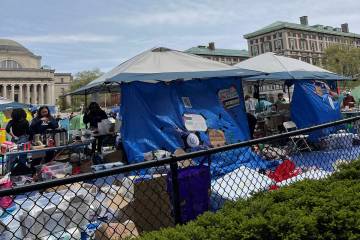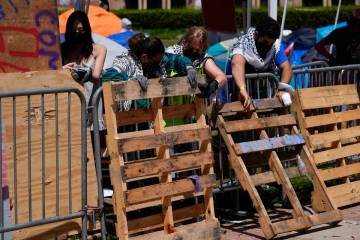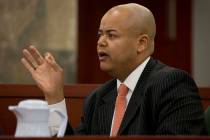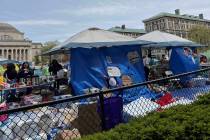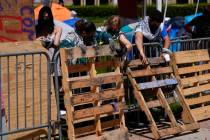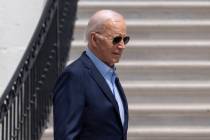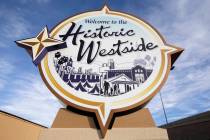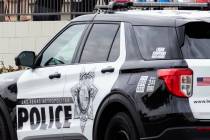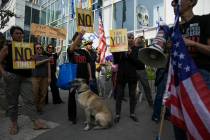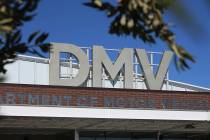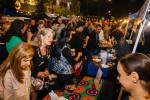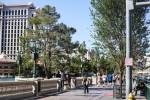Las Vegas’ urban forest home to 113,000-plus trees
In a desert city like Las Vegas, it can be hard to see the forest for the trees. Or even the trees.
But the valley is actually home to a forest. We’ve got more than 113,000 trees from more than 250 different species, according to the Nevada Division of Forestry.
That man-made urban forest helps clean our air, shade our buildings, increase our property values and soak up stormwater — environmental benefits worth about $3.9 million a year. And if you had to replace all those trees with new ones of the same size and kind, it would cost you roughly $276 million.
“The benefits provided by our urban trees are astounding,” said David Howlett, coordinator for the state’s urban forestry program.
The division just released the final results of a detailed tree inventory conducted last year in the Las Vegas Valley, Boulder City and Mesquite.
A team of certified arborists — that’s right, certified — from an Ohio-based consulting firm fanned out across the area to examine trees one by one, mapping them and recording their type, size and general health.
They logged 117,059 in all, and that’s just the publicly owned ones in the three areas. Trees planted in landscapes, neighborhood common areas, parking lots and other privately owned places were not included in the inventory.
What the arborists found is an urban forest populated by mostly young, mostly healthy trees. Three-quarters of them are of the broad-leaf, hardwood variety, but 262 different species were catalogued. That’s about five times the variety seen in the average U.S. city, according to a study cited in the inventory report.
The most popular species here is the Mondale pine (14 percent of the total population), followed by the Fan-Tex ash (9 percent) and the desert willow (5 percent).
Among the other findings:
• The valley’s highest percentage of older trees can be found on the UNLV campus, which also boasts the highest amount of trees in good condition at 83 percent.
• Nearly half of Henderson’s trees are in the youngest age class, with trunks of three inches in diameter or less.
• Half of all the trees in Boulder City are considered large or medium sized, the highest such percentage in Clark County.
• Almost a quarter of the trees in Mesquite are palm trees, well ahead of any other community in the county.
The roughly 117,000 trees inventoried last year provide a canopy covering almost 700 acres, with roots that absorb about 84 million gallons of stormwater runoff each year.
Each of these so-called “public trees” provides an average value to their communities of $33.19. The largest share of that benefit ($25.56 per tree) comes in the form of improved property value, though each tree also reduces electricity and natural gas use to the tune of about $3.66 on average by shading buildings and cooling the air, the inventory report said.
The other financial benefits of the urban forest come from absorbing carbon dioxide and reducing other pollutants.
The inventory report does not contemplate the water required to sustain these trees or the power needed to pump it. It also excludes the costs associated with seasonal allergies made worse by the valley’s sizable population of fruitless mulberry, olive and pine trees.
Instead, the report focuses on the sunny side of the urban forest. It cites a variety of studies that credit healthy urban trees for improving the “overall attractiveness” of a community, boosting the mental health and the quality of life and promoting “retail sales and tourism.”
And trees are a good use of public money in a way new buildings and fire trucks and sidewalks simply can’t match, the report states. With the proper care and maintenance, a tree will actually increase in value over time as it grows, “unlike other public assets.”
Review-Journal writer Richard Lake contributed to this report. Contact reporter Henry Brean at hbrean@reviewjournal.com or 702-383-0350. You can find him on Twitter at @RefriedBrean.
MORE INFORMATION
For more on the Clark County urban forest tree inventory or to download the full report, click here.




